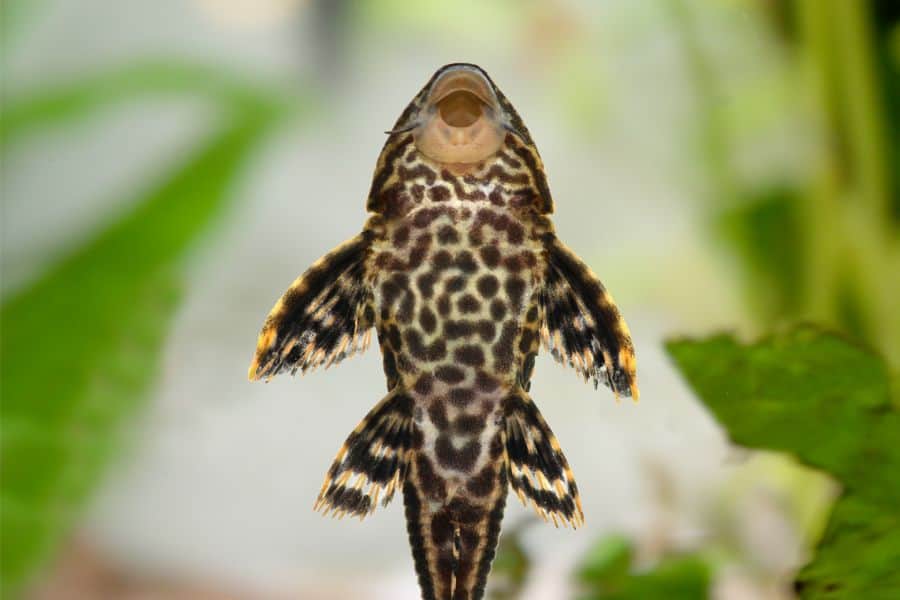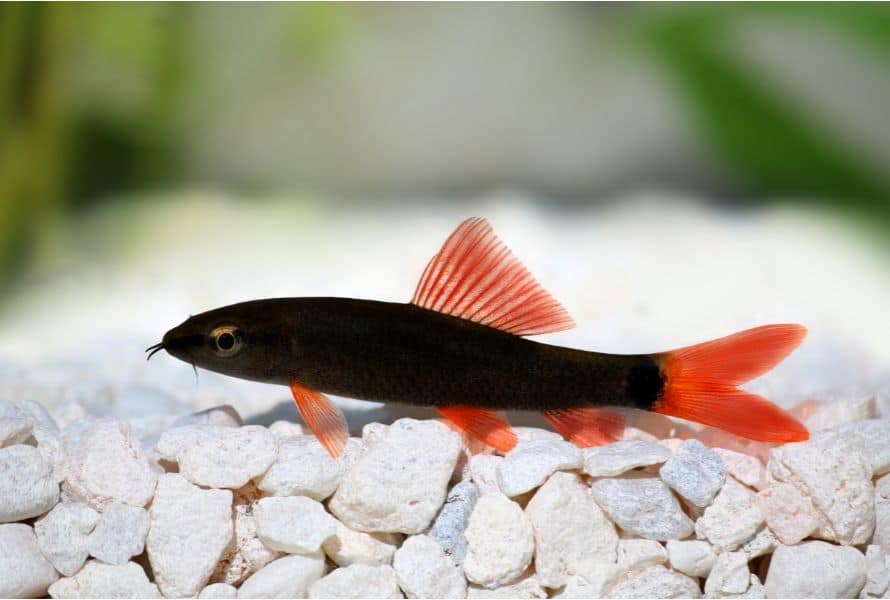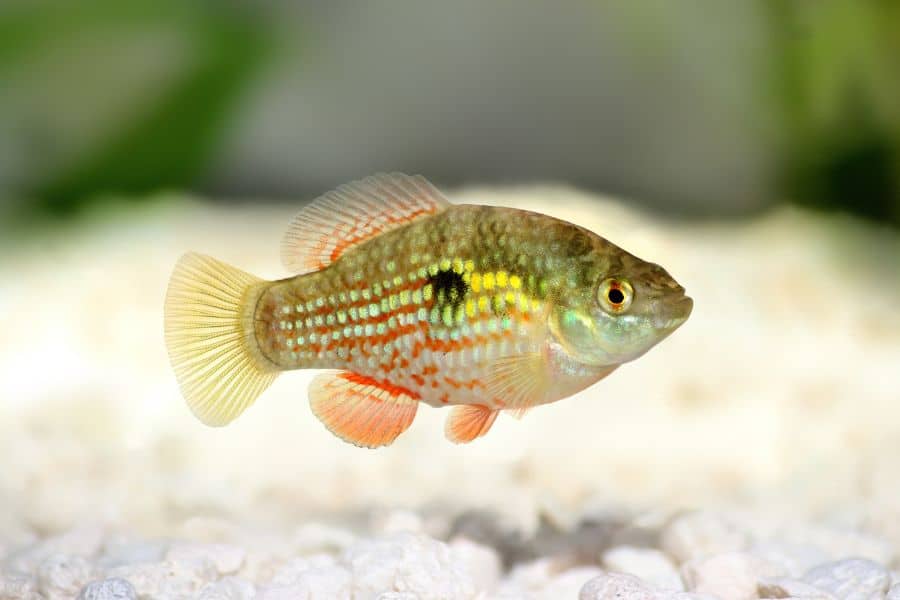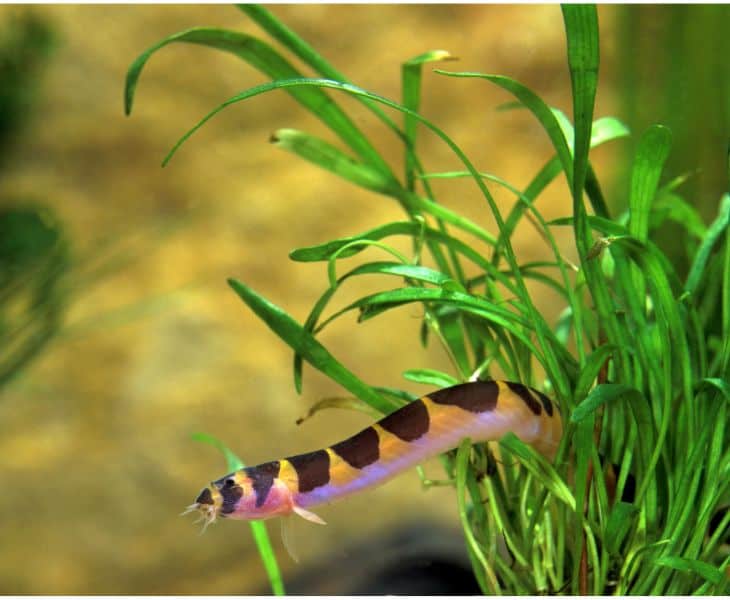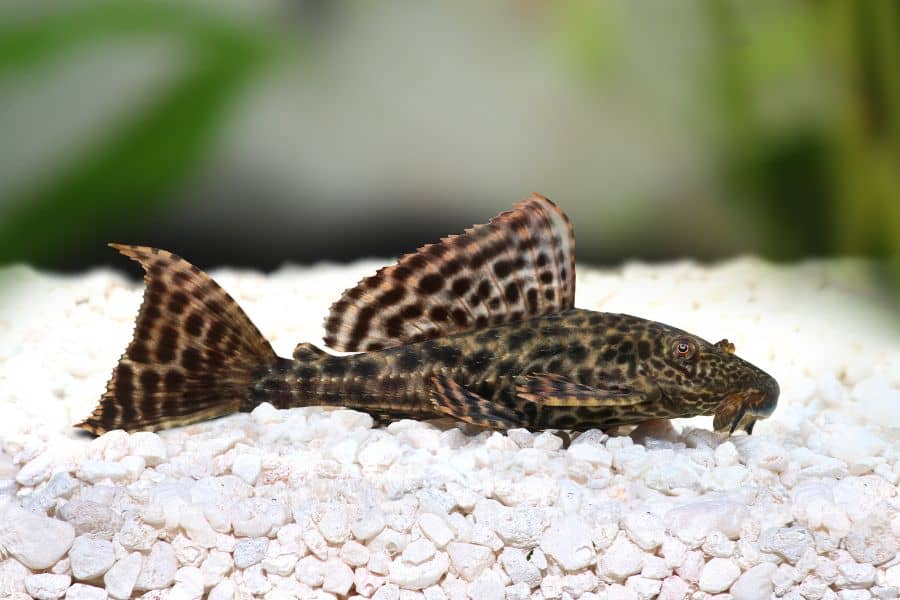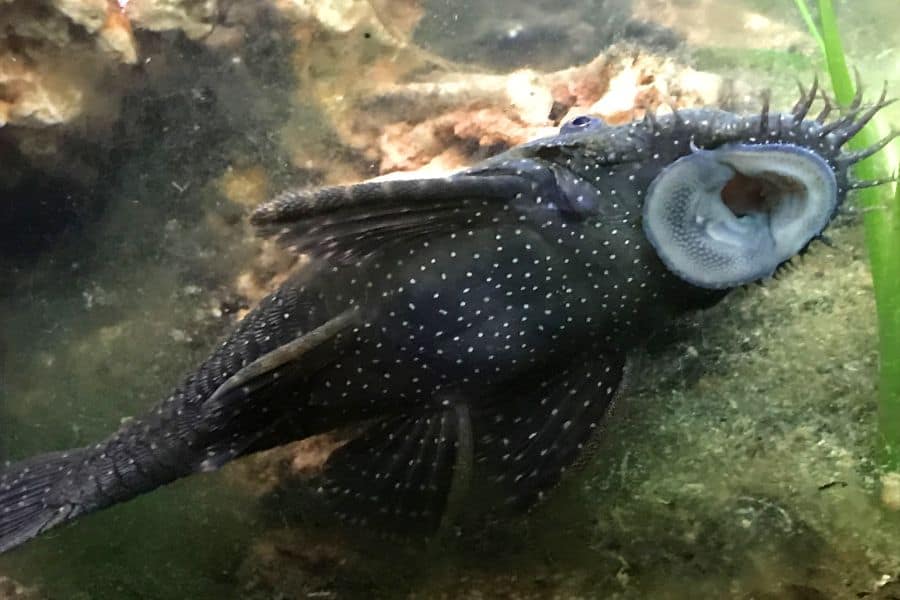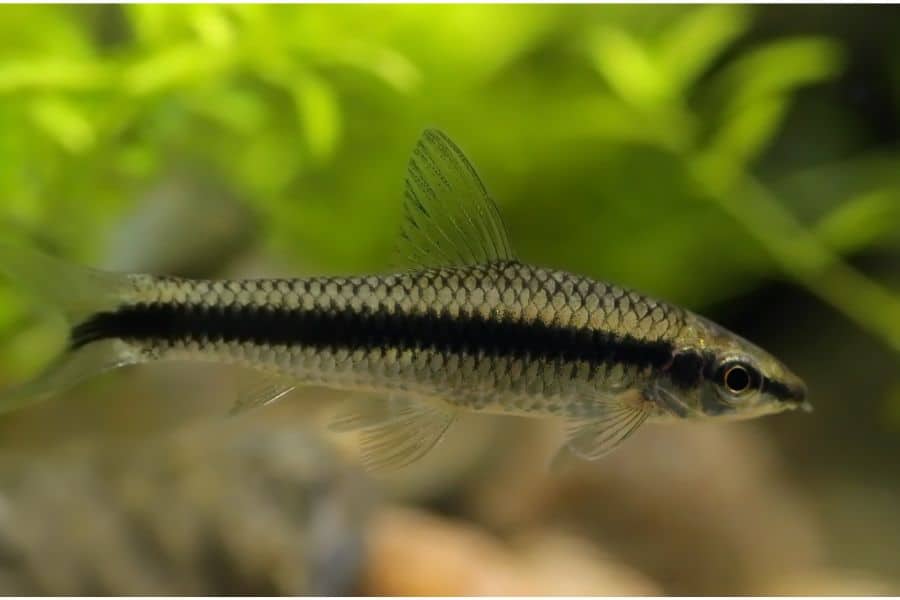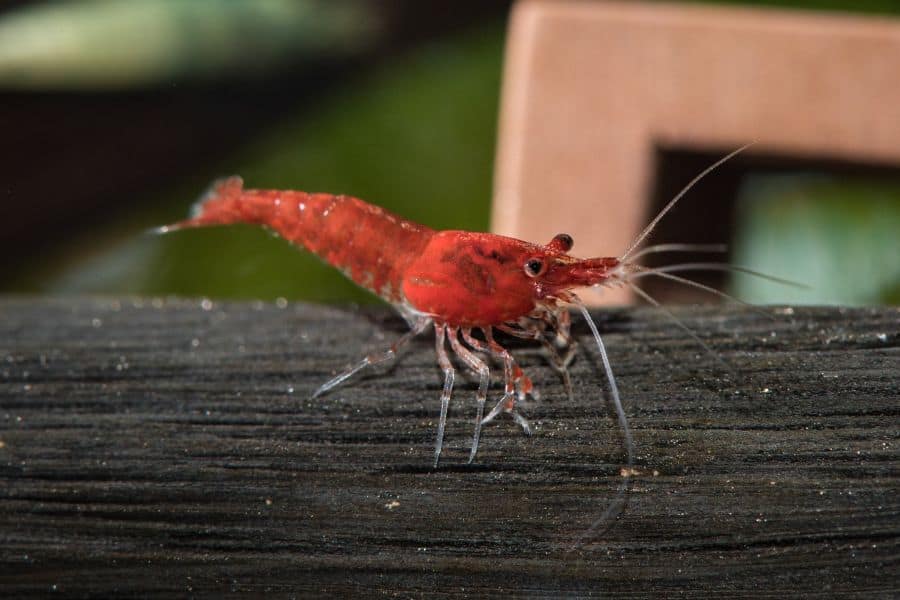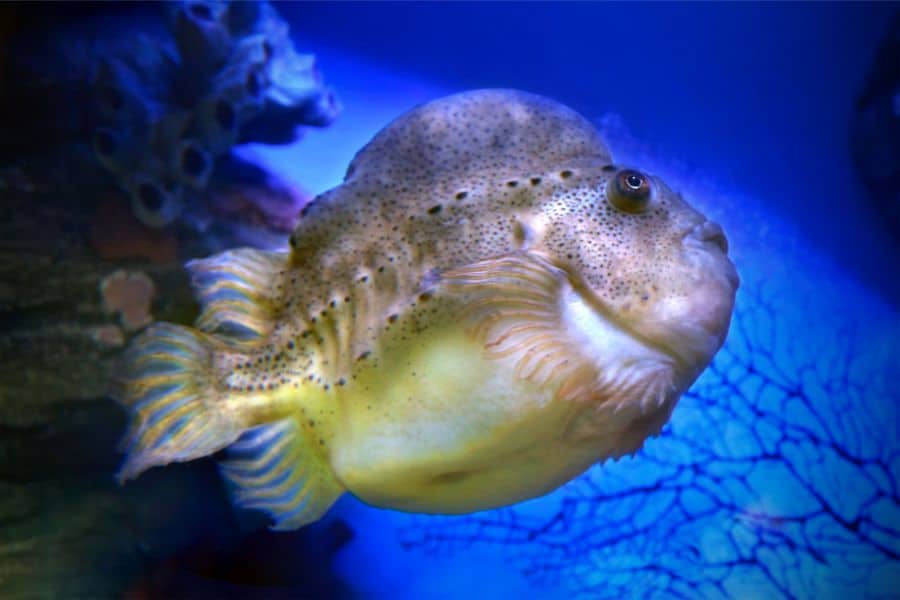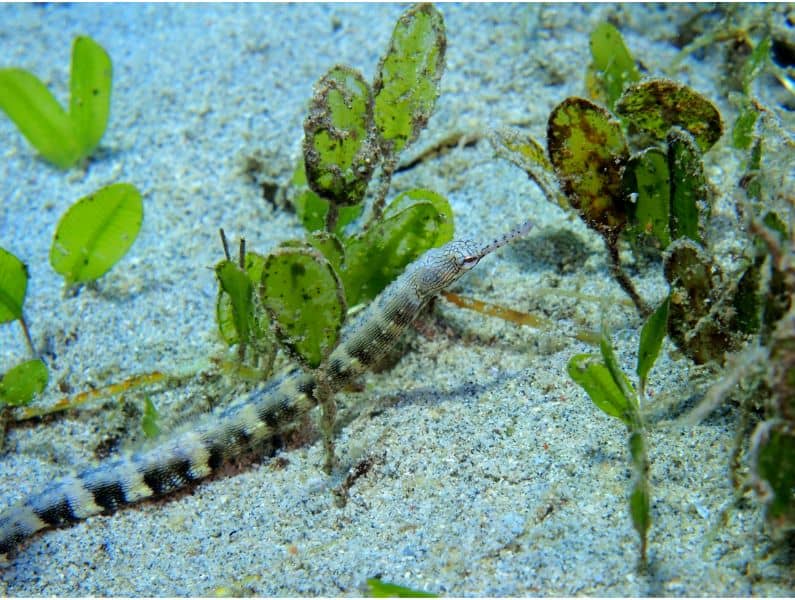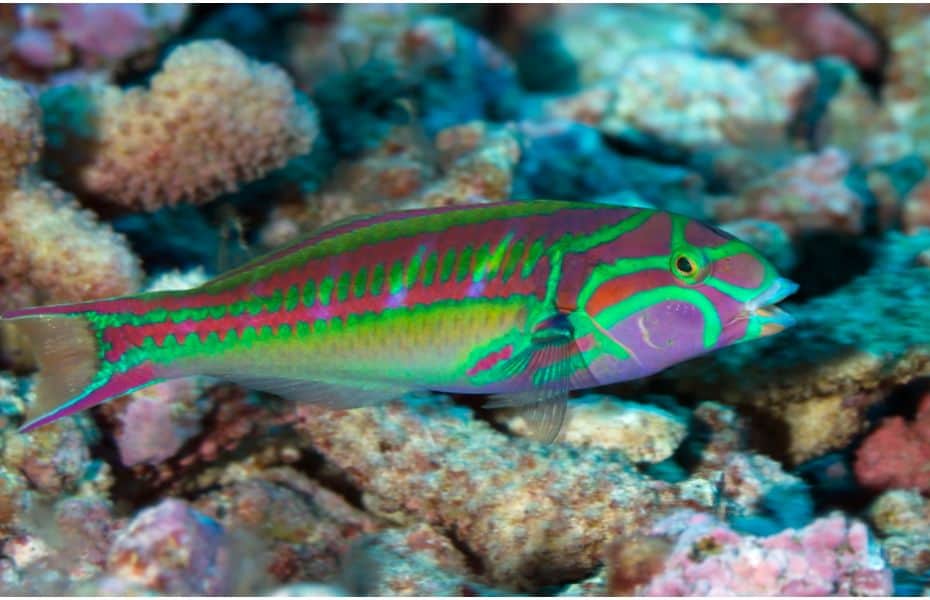Freshwater aquariums are a popular method to bring the beauty of aquatic life into our homes. Yet, caring for the ecosystem and keeping an aquarium clean may be difficult.
Adding freshwater fish that can maintain the tank clean is one method to make this task simpler. By eating algae, leftover food, and other detritus that might collect in the tank, these fish, sometimes referred to as “cleaning fish,” help to maintain a healthy aquarium environment.
They can also decrease the need for frequent water changes and aid in preventing the development of hazardous microorganisms.
We will discuss some of the most well-known freshwater fish that can maintain your aquarium clean, emphasizing the advantages they provide for the well-being and aesthetics of your aquatic habitat.
Best Freshwater Fish Tank Cleaner
1. Rainbow Shark
The Rainbow Shark is a popular freshwater fish in the aquarium hobby, recognized for its unusual look and propensity to clean its surroundings. While commonly being labeled a “shark,” the Southeast Asian native Rainbow Shark is really a kind of freshwater species.
Rainbow Sharks are bottom-dwelling fish that spend most of their time patrolling the substrate in search of food. One of the primary ways they contribute to keeping the aquarium clean is by eating algae with a ferocious appetite.
In an aquarium, the growth of algae may rapidly become a problem since it not only looks bad but also depletes the water’s oxygen concentration and encourages the development of hazardous pathogens.
Rainbow Sharks are skilled in scavenging for uneaten food and other debris that may have collected on the substrate in addition to eating algae. It minimizes the chance of dangerous bacteria growth and helps to keep the tank cleaner.
2. Flagfish
Freshwater species native to North America also include flagfish. This species is highly regarded in the aquarium hobby because of its distinct look, hardiness, and cleaning ability.
Due to their omnivorous diet, flagfish consume both plant and animal stuff. Algae is one of their main food sources, which they eat in vast amounts.
By preventing the formation of undesirable algae, they become quite efficient in maintaining tank cleanliness. Flagfish excel at consuming filamentous algae, which is difficult to remove manually.
Flagfish are renowned for their tendency to pick at the substrate and decorations in the tank in addition to eating algae. This behavior assists in the removal of any dirt that may have accumulated on these surfaces.
As an outcome, the tank remains clean, and there is less chance of dangerous germs growing. Flagfish are a great option for novice aquarium enthusiasts since they are resilient and very simple to care for.
To guarantee their health and well-being, they do; however, need adequate tank care, which includes routine water changes and filter cleaning.
3. Snails
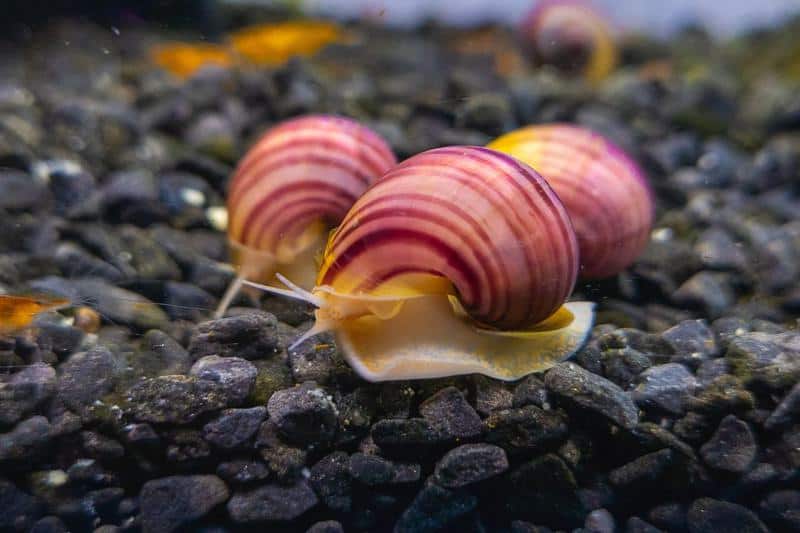
Snails, especially Nerite Snails and Mystery Snails, are popularly used in the aquarium hobby as cleaner organisms. They are recognized for their capacity to devour algae, unconsumed fish food, and other organic waste in the aquarium, assisting in maintaining the cleanliness and well-being of the tank.
A good example of an algae eater is the nerite snail, which can eat diatoms, green algae, and brown algae among other kinds of algae. They can aid in the prevention of the development of undesirable algae blooms and are particularly good at cleaning hard surfaces, like glass and decorations.
On the opposing side, Mystery Snails are renowned for their capacity to devour organic waste such as unconsumed fish food. They have a voracious appetite and can quickly clean up leftover food before it has a chance to decompose and contribute to harmful bacteria growth in the tank.
Both varieties of snails are also adept in decomposing organic materials, including degrading plant matter and fish excrement, which aids in lowering the concentration of hazardous compounds in the water.
4. Loaches
Loaches are a type of freshwater fish recognized for their distinctive look, unusual behavior, and, in certain circumstances, their ability to keep the tank clean.
An aquarium hobby staple, Kuhli loaches are noted for their propensity for burrowing in the substrate. Stirring up and removing debris from the substrate, this behavior can help keep dangerous compounds from accumulating in the tank.
Moreover, Kuhli loaches have a habit of consuming tiny insects and other invertebrates, which helps improve the tank’s general cleanliness.
Hillstream Loaches are another species that are valued for their cleaning abilities. They are adapted to fast-flowing streams and rivers, and they have a unique body shape that allows them to cling to rocks and other surfaces in the aquarium.
This behavior helps to dislodge and clear dirt from the substrate and surfaces in the tank. Also, it is known that Hillstream Loaches eat algae, preventing unsightly algal blooms.
Despite the fact that not all loaches are considered “cleaner fish,” some species do have habits and nutritional preferences that could aid to maintain a clean and healthy aquarium.
5. Goby
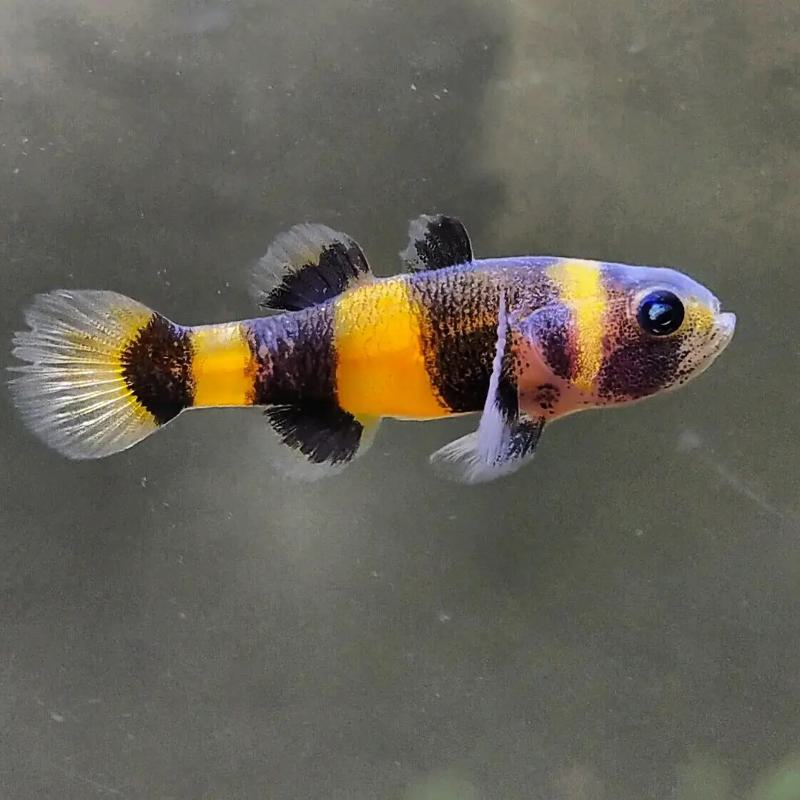
Gobies are a diversified species of tiny, colorful fish that are beloved in the aquarium hobby. For instance, neon gobies are tiny, vibrant blue fish native to the Caribbean.
They are recognized for their symbiotic association with bigger fish, which they clean by removing parasites and dead skin. Neon gobies frequently set up cleaning stations in aquariums where they proactively clean the bodies of other fish.
It can aid in blocking the growth of ailments and other health problems among the fish population. Moreover, Neon Gobies are known to devour tiny invertebrates like brine shrimp and copepods, which may help maintain the tank clean by eliminating surplus food and detritus.
Further, they are calm and cooperative fish, which might boost guests’ pleasure in the aquarium as a whole.
6. Catfish
Several types of freshwater fish collectively referred to as “catfish” are praised for their cleaning and scavenging skills. Otocinclus catfish, commonly referred to as dwarf suckers, is a well-liked species in the aquarium hobby because of their tiny size, calm disposition, and ability to devour algae.
One interesting fact about Otocinclus Catfish is that they are admired for their ability to swim upside down, using their suckermouths to cling to the underside of leaves and other surfaces while feeding on algae.
They are very good at cleaning the surfaces of plants, rocks, and other aquarium decorations. It can assist to keep visible algae blooms at bay while also contributing to a cleaner, healthier tank environment.
Striped Raphael Catfish is also known to be efficient at stirring up the substrate in the tank. They may contribute to tank cleanliness by eating a range of organic materials, including food scraps, algae, and tiny invertebrates like snails and shrimp.
It can aid in avoiding the growth of filth and waste materials in the substrate, which could be hazardous to fish and other tank creatures.
7. Bristlenose Plecos
Bristlenose Plecos, also known as Bristlenose Catfish, are a species of freshwater fish that are popular in the aquarium hobby for their ability to help keep the tank clean.
They belong to the plecostomus genus of catfish, which are famous for their propensity for scavenging and eating algae.
Bristlenose Plecos are known to devour food scraps and other organic waste in the tank in addition to their propensity for eating algae, which can aid in preventing the build-up of dangerous compounds in the water.
They are also efficient in scrubbing the sides of plants, rocks, and other tank decorations, which can aid in the prevention of algae and other unpleasant organisms from growing.
8. Siamese and Chinese Algae Eaters
Siamese and Chinese algae eaters are two freshwater fish species that are prominent in the aquarium hobby due to their ability to keep the tank clean. Both creatures have a tendency for eating various forms of algae and are capable of performing this task.
Siamese Algae Eaters are especially good at eating filamentous algae, which can develop on tank plants and other objects. They are also recognized to consume diatoms, green algae, and some forms of blue-green algae.
Siamese Algae Eaters are noted for devouring leftover food and other organic waste in the tank in addition to their propensity for eating algae.
Chinese algae eaters have unique mouth anatomy that enables them to ingest different kinds of algae effectively. Their teeth include rows of microscopic, comb-like sharp edges that aid in grasping and shredding the algae, and their lips are designed for scraping algae off of surfaces.
The most popular varieties of microalgae ingested by Chinese algae eaters are diatoms and green algae. Green algae often develop on vegetation and other items in the aquarium, but diatoms can coat pebbles, substrate, and other things in the tank with a brown coating.
Chinese algae eaters can feed on both kinds of algae by scraping it off of objects with their mouths and then shredding it with their teeth.
Compared to green algae and diatoms, blue-green algae sometimes referred to as cyanobacteria might prove more challenging to break down. Nonetheless, blue-green algae might be devoured by Chinese algae eaters, especially when the algae is young.
9. Siamese Flying Fox
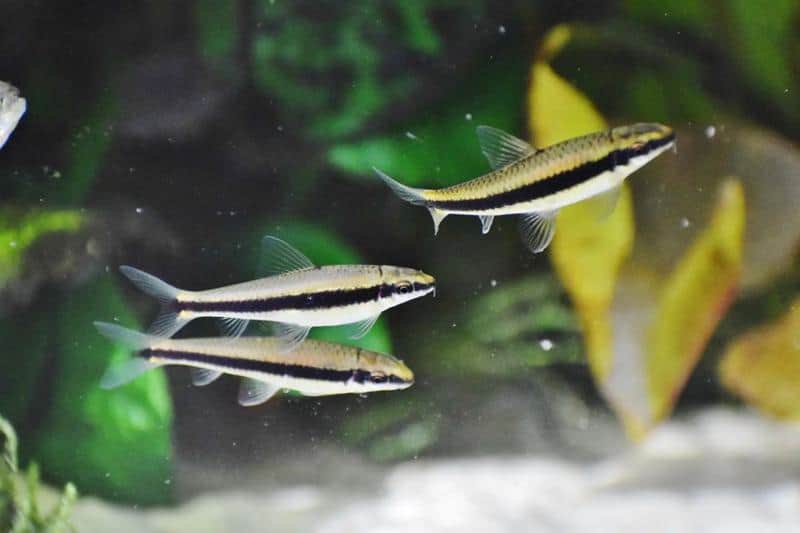
The Siamese Fly Fox fish are mostly herbivorous, and their unique jaw architecture allows them to properly ingest algae. They scrape algae off of objects like rocks, plants, and aquarium decorations with their razor-sharp teeth.
They have a strong preference for hair algae and are skilled at devouring vast amounts of this form of algae. Siamese flying foxes require constant food intake to sustain their energy levels because of their very strong metabolism.
Siamese Flying Foxes are capable of eating algae, but they may also assist keep the tank clean by ingesting food scraps and other organic materials that could collect on the tank’s bottom. They are lively, inquisitive fish that are frequently spotted searching the tank’s bottom for food and other interesting things.
10. Shrimps
Aquarium shrimps are well-liked by aquarists because of their appealing look and capacity to keep tanks clean. Shrimp of many types, such as the Amano shrimp, Ghost shrimp, Cherry shrimp, and Bamboo shrimp, are frequently kept in aquariums. Every species approaches tank cleaning in a different way.
Amano shrimp, for example, are known for their efficient algae-eating abilities, making them an excellent choice for planted aquariums. Ghost shrimp, on the other hand, are scavengers that consume leftover fish food and debris at the bottom of the tank.
Cherry shrimp are known for their bright red coloration and are often used as an indicator of water quality since they can be sensitive to poor water conditions. Bamboo shrimp are filter feeders, meaning they use their fan-like appendages to filter food particles from the water.
Shrimp may contribute to maintaining the ecosystem’s equilibrium in an aquarium, which is an additional advantage. Shrimp absorb extra nutrients in the water, such as phosphates and nitrates, which can aid in preventing the development of dangerous compounds and maintaining the water’s excellent quality.
11. Cichlids (Brackish Water and Freshwater Fish)
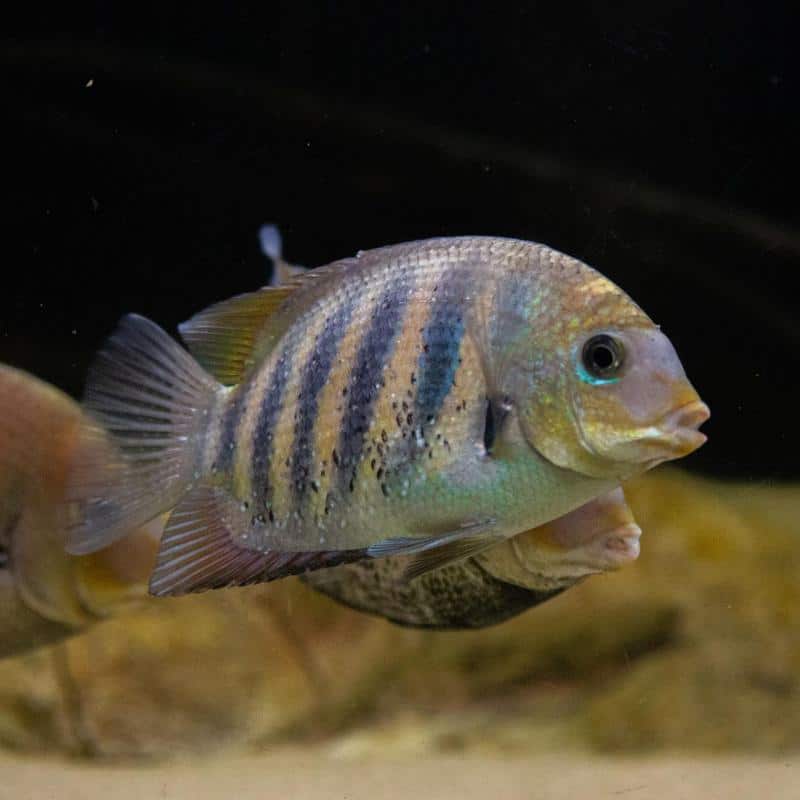
Cichlids like Orange chromide, Green chromide, Geophagus, and Satanperca are examples of cleaner fish. With their consumption of leftover food and other organic waste, cichlids perform an important part in maintaining the aquarium water’s cleanliness and health.
Several cichlid species are voracious feeders and will happily swallow whatever food that is supplied to them as well as any other tiny creatures that may be present in the water.
Cichlids that are known for their digging behaviors can help to prevent detritus buildup by actively turning over the substrate and exposing any trapped debris.
Also Read: Aquarium Fish that Eats Poop
A Few Saltwater Cleaner Fish
Lumpfish (Marine Water Fish)
Originating from the Northern Atlantic Ocean, lumpfish are coldwater species. They don’t eat algae or other tank waste; thus, they aren’t often kept for their cleaning abilities.
However, Lumpfish do have one interesting behavior that may indirectly help to keep the tank clean. They are referred to as “cleaning fish,” as they pick parasites and dead skin off the bodies of other fish in the wild.
Pipefish (Marine Water and Freshwater Fish)
By eating any little crustaceans and other potential animals in the water, pipefish assist in the maintenance of healthy water quality. They are sometimes referred to as “micro predators” since they graze on minute invertebrates that may be present in the water column, including copepods, small crustaceans, and worms.
These might aid in preventing the buildup of detritus in the water reservoir. Detritus is a collection of dead plant and animal materials that can gather in the substrate and other parts of the aquarium, causing the accumulation of toxic chemicals like ammonia and nitrites.
Wrasses (Marine Water Fish)
The Bluestreak cleaner wrasse and the Ballan wrasse are two wrasse species that are well renowned for their cleaning abilities.
By eating parasites and other microscopic creatures that may be on the skin and gills of other fish in the tank, wrasses contribute to keeping the aquarium clean. They help in decreasing the possibility of infection while keeping them healthy.
Also Read:
FAQs
What Is a Cleaner Fish?
A cleaning fish is a type of fish that consumes algae, uneaten food, and other organic materials to assist maintain high water quality in an aquarium.
Are All Types of Cleaner Fish Suitable for All Aquariums?
Various cleaner fish have different needs, and not all can be kept in every tank. To maintain the best health and welfare of the species being kept in the aquarium, special attention and research should be conducted to meet their unique requirements.
Do Cleaner Fish Eliminate the Need for Regular Water Changes and Maintenance?
No, while cleaner fish can help to maintain good water quality, they do not eliminate the need for regular water changes and maintenance. Regular water changes and maintenance are important for maintaining good water quality and overall aquarium health.
Can Cleaner Fish Be Used to Clean up After Overfeeding?
It is not advisable to rely on cleaner fish to clean up after overfeeding, even if they can assist consume uneaten food in an aquarium. Overfeeding can result in poor water quality and other health problems in the aquarium; therefore, it’s crucial to give the fish in the tank the right quantity of food.
Conclusion
Many freshwater fish and other aquatic creatures can contribute to the cleanliness and well-being of aquariums. From snails and shrimp to catfish, plecos, and different kinds of algae-eating fish, these cleaner organisms can help to consume uneaten food, algae, and other waste in the tank.
It is essential to learn about these species’ unique preferences and behaviors and to offer proper care and attention to guarantee their health and well-being in the tank.
By keeping a healthy mix of different fish species and cleaner creatures, it is possible to establish a thriving and aesthetically pleasing aquatic ecosystem in home aquariums.
